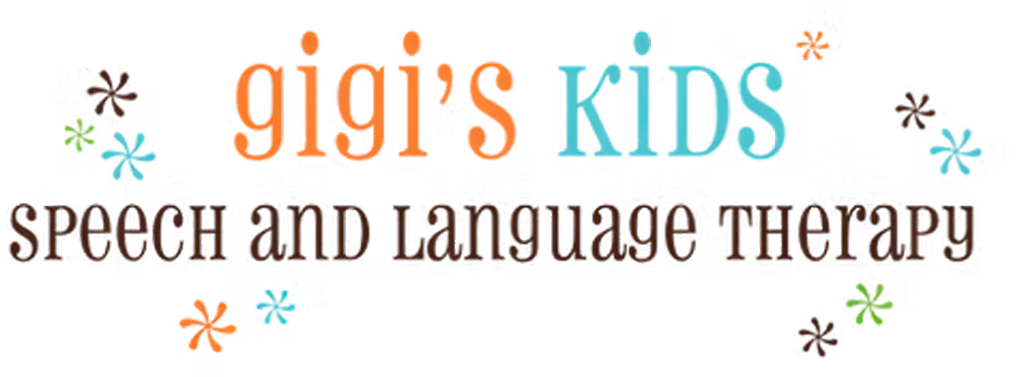Meet Our Team

Amanda G. Tompkins MS, CCC-SLP
Owner
Amanda G. Tompkins, MS, CCC-SLP has been a certified Speech-Language Pathologist through the American
Speech-Language-Hearing Association (ASHA) since 2000. She earned her Bachelor of Arts in Communication Science and Disorders from Michigan State University in 1996, followed by a Master of Science in Audiology and Speech Sciences from Nova Southeastern University in 1999.
Amanda has received multiple ASHA Awards for Continuing Education (ACE), a distinction that recognizes professionals who go beyond the required standards for ongoing learning and development in the field. She actively shares her expertise with the community—presenting at local preschools, parenting groups, and offering professional development workshops for educators throughout the region.
With over 25 years of experience, Amanda specializes in enhancing communication skills in toddlers and preschool-aged children, as well as supporting the speech, language, and social communication needs of school-aged children and teenagers. She spent 15 years serving the Bloomfield Hills School District as a specialist in the Deaf and Hard of Hearing program, before launching her private practice. As her client base and professional network expanded, Amanda founded Gigi’s Kids – Speech and Language Therapy, building a team of exceptional Speech-Language Pathologists.
In addition to her clinical work at the West Bloomfield location, Amanda has spent the past 10 years leading a team of SLPs in partnership with an interdisciplinary autism center. Her greatest insights, however, come from her most personal role—being the proud mother of two sons.
Outside of the office, Amanda enjoys traveling, spending time with her family, and woodworking.

Marci Frank, MA, CCC-SLP
Speech and Language Pathologist
Marci brings over 25 years of experience and dedication to the field of pediatric speech and language therapy. She is known for her innovative, sensory-rich, and play-based approach to the assessment and treatment of communication delays and disorders in young children.
Marci specializes in early childhood and preschool language development, with a strong focus on parent education and coaching. She is passionate about empowering parents to become confident communication partners, helping families integrate speech and language strategies into daily routines in natural, meaningful ways.
Marci played a key role as a supervising speech-language pathologist for Gigi’s Kids during our partnership with a multidisciplinary clinic for autistic children. She brings extensive knowledge of augmentative and alternative
communication (AAC) systems that support and enhance spoken language, helping children find the communication tools that work best for them.
Outside the office, Marci enjoys spending time with her husband, college-aged son, and two dogs, Ned and Roger. She loves yoga, exploring new places, and traveling with her family.

Sarah Addis, M.A., CCC-SLP
Speech-Language Pathologist
Sarah earned her Bachelor of Science in Communication Sciences and Disorders from Grand Valley State University in 2012 and her Master of Arts in Speech-Language Pathology from Wayne State University in 2017.
Sarah began her career with Gigi’s Kids in 2017, completing her clinical fellowship. Since then, she has continued to expand her expertise with specialized training in Early Intervention, autism spectrum disorder, expressive and receptive language delays, motor speech and articulation disorders, and augmentative and alternative communication (AAC).
Known for her patient and friendly demeanor, Sarah has a natural ability to connect with children and build strong relationships with families. Parents consistently praise her for empowering them with strategies to create meaningful learning opportunities at home.
Sarah is also a leader in virtual therapy, offering creative, play-based sessions that keep children engaged and excited to learn. She values a collaborative approach, working closely with families and other professionals to tailor therapy to each child’s unique needs.
Outside of work, Sarah enjoys life with her two young children, who inspire her passion for supporting kids and families every day.

BJ Sarmiento
Office Manager
BJ is the heart of our office and your go-to person for all things related to insurance, billing, and prescriptions. With deep expertise in insurance matters, BJ is always available to offer clear, helpful guidance. As a dedicated mother of two, she understands the demands of parenting and approaches every client with empathy and compassion. BJ is committed to helping you quickly and efficiently, so you can focus on what matters most—your family!

Odin Tompkins
Animal-Assisted Therapy Dog in Training
Odin is our lovable two-year-old Aussiedoodle and therapy dog-in-training here at Gigi’s Kids Speech and Language Therapy. With his gentle temperament, high intelligence, and playful personality, Odin brings smiles wherever he goes. Currently working toward becoming a certified Animal-Assisted Therapy (AAT) dog, Odin is learning how to support children during speech therapy sessions by offering comfort, motivation, and a calming presence. Whether he’s sitting patiently beside a child or simply offering a soft nuzzle, Odin is becoming an important part of our therapy team—and we can’t wait for you to meet him! Odin is available on a limited basis to work with children and families who are interested in meeting him.
